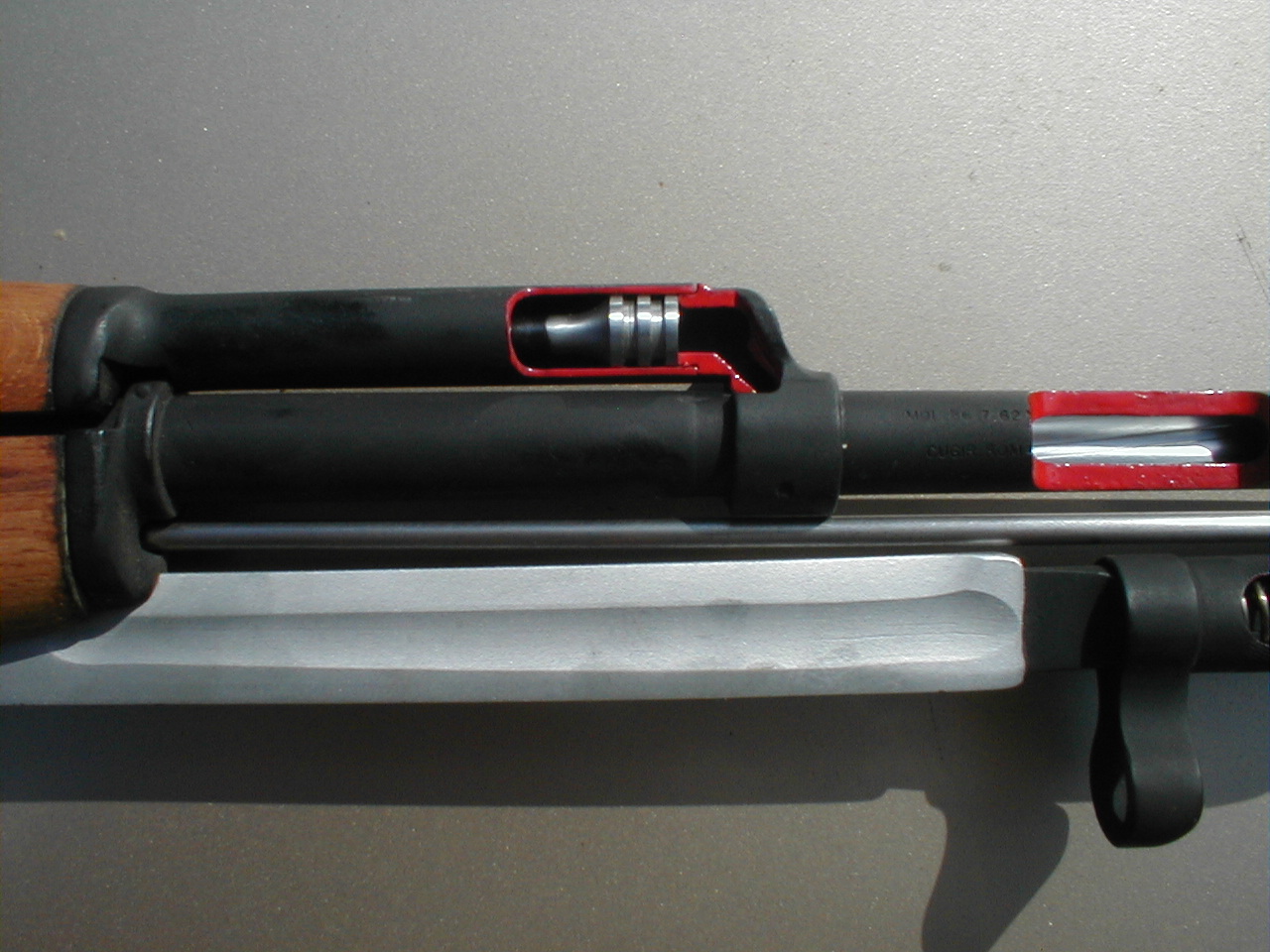

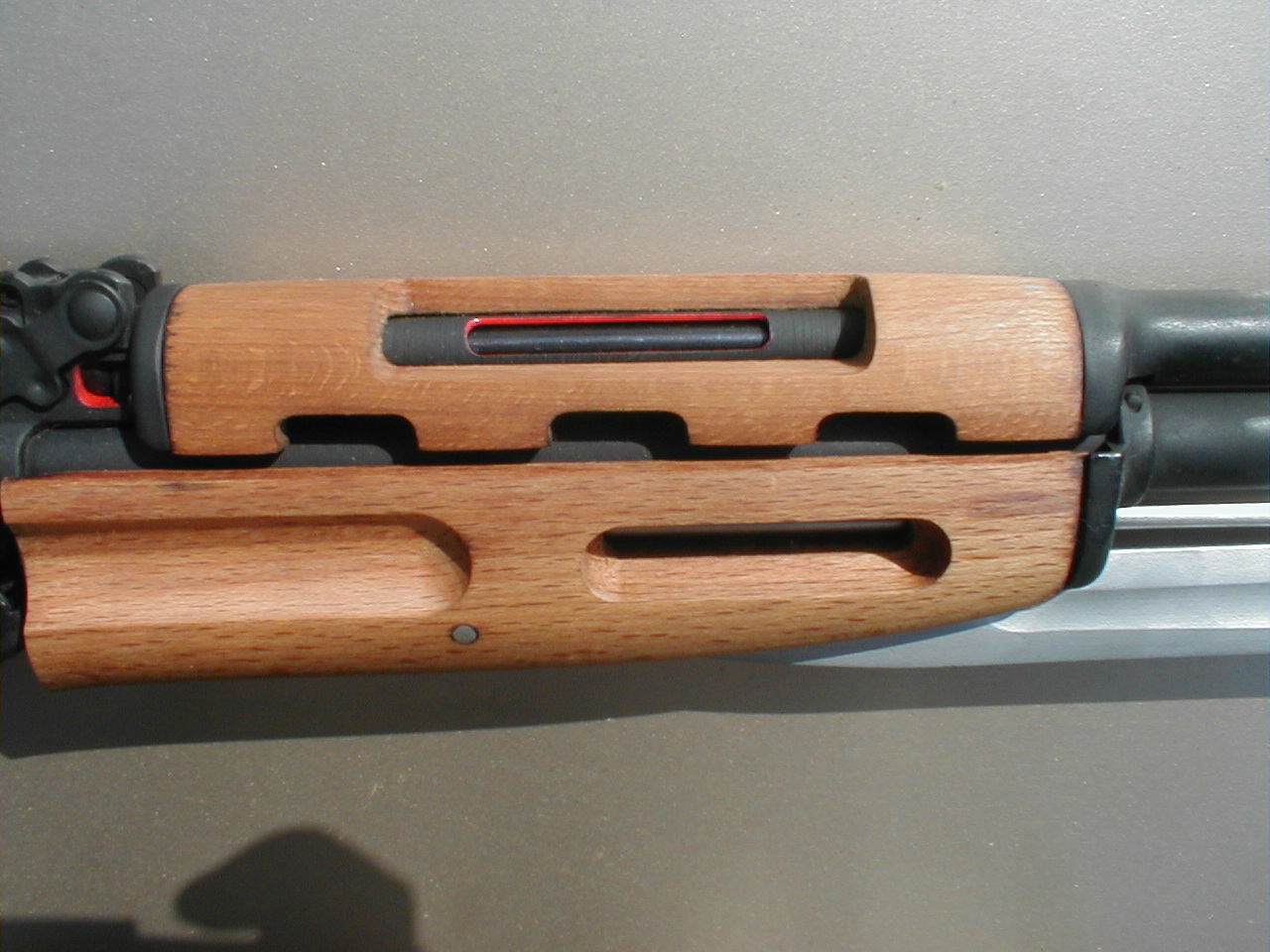
SKS Gas Cylinder Block
The purpose is to use the gas from the spent cartridge by transferring the force out of the barrel to the gas piston that is housed in the gas tube under the Hand Guard. The piston then moves the op-rod and finally bolt carrier. They are shaped differently but all perform the same function. The various pictures below show the gas cylinders blocks from various makes and models of SKS's. Currently these are the only differences I have noticed. Some are only cosmetic, some have different stampings, some are shaped slightly different and some are just plain different.
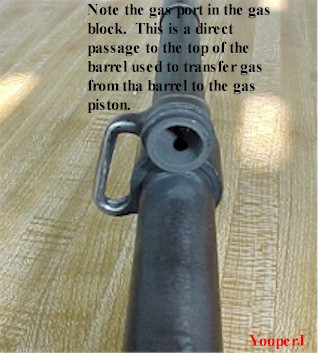
Gas Port inside the Gas Cylinder Block
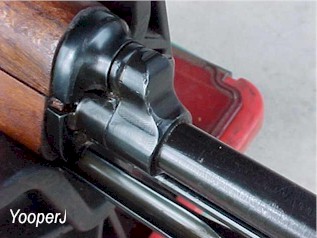
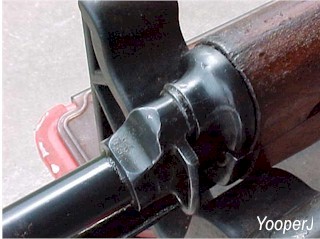
Albania Early Albania Late
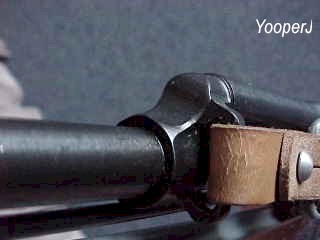
China Early
China 1970's
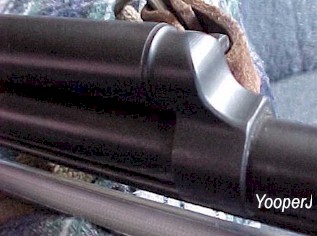
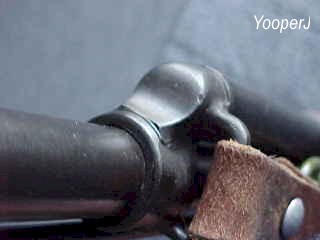
China 1980's
China "D"
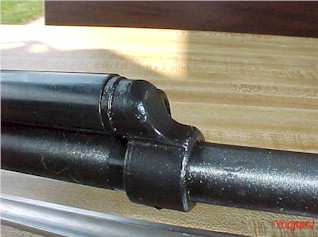
China Sheet Metal Receiver Model
& other very late production Sino-Soviet Letter gun
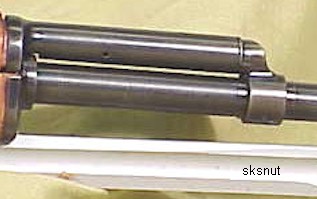
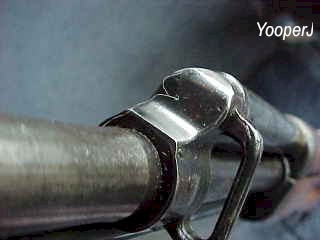
East Germany North Korea
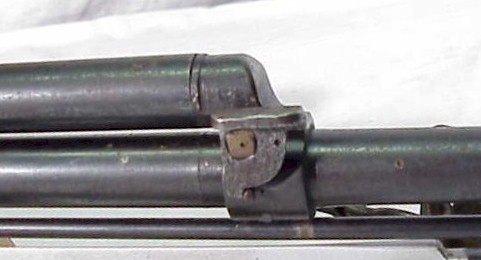
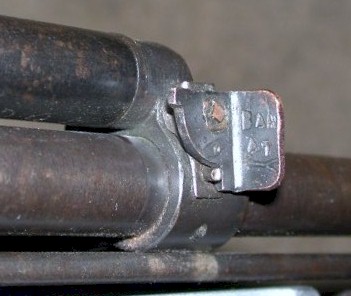
North Korea gas shut off for a Grenade Launcher Note the markings on the lever
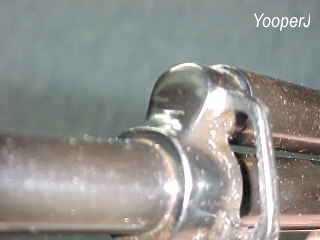
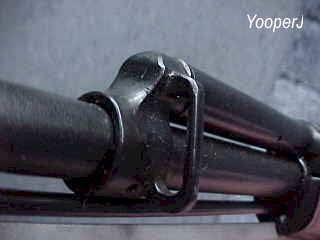
North Vietnam Romania
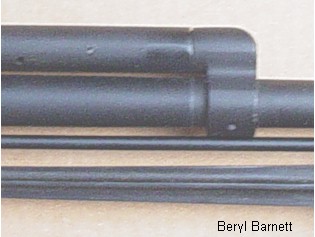
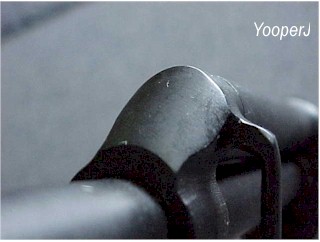
Russia - 1949 to early 1950 Russia - mid1950 to 1952
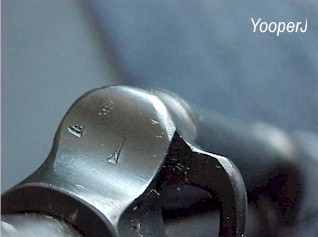
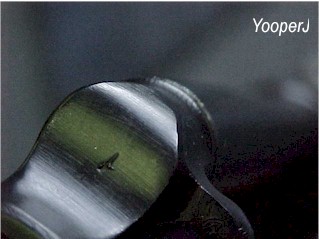
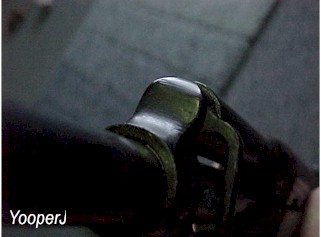
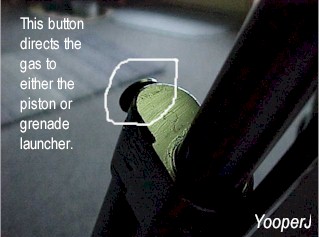
Yugo M59/66 set to rifle semi auto mode. The button is down on the side of the gas block.
Yugo set to grenade mode with button on the top of the gas block. Note the orifice position. It is blocked off
from the port in the gas block and pressure is diverted to the grenade launcher. The rifle is now a single shot.
This shows the shut off in the remove position for cleaning. Note the large port in the gas block with diverter removed.
Diverter removed with button in large hole on top. Small hole is the gas orifice. These units become inoperable if NOT cleaned.
![]()
Gas Cylinders
All of the Gas Cylinders are constructed the similar. The Albanian has a different end and venting. The Yugoslavian 59/66 rifle that uses a Grenade Launcher has a cut off mounted on the gas block to divert the pressure to either the launcher or the gas piston and has a different end. Korean grenade launcher models seem to have the same cylinder as the conventional rifle. see above on gas blocks. The cylinder connects directly up to the gas block on the barrel and is the mechanism to carry the gas from the spent cartridge to the Piston. The Gas "tubes" are vented to reduce any excessive pressure away from the front of the tube. The various pictures below show the gas cylinders from various makes and models of SKS's. China used both a one piece gas cylinder on the early SKS's and a 2 piece gas cylinder on late models. Currently these are the only differences I have noticed. Some are only cosmetic, some have different stampings, some are shaped slightly different and some are just plain different.

This gas cylinder is the normal SKS cylinder. It measures 9 19/32" overall. The cylinder of the SKS 'S' paratrooper is different than the regular paratrooper @ 8 7/8"
Albanian is 9 9/16" long. Yugo 59/66 cylinder is 9 11/16" long.
Gas Cylinder to Gas Block Attachment Ends
Albanian China and Others Yugoslavian M59/66 only.
Gas Cylinder Vent Holes
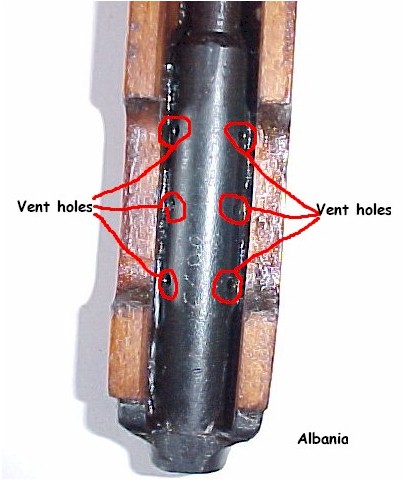
Albania uses 6 total vent holes, 3 on each side. Note position relative to cutout on the hand guard.
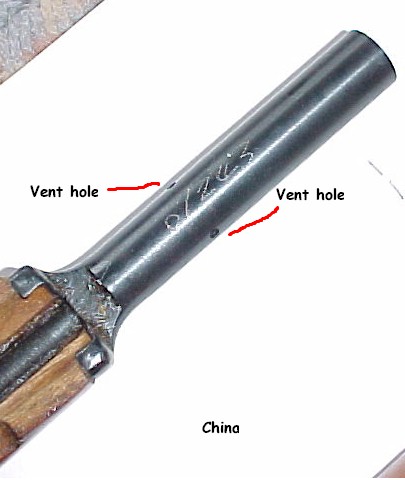
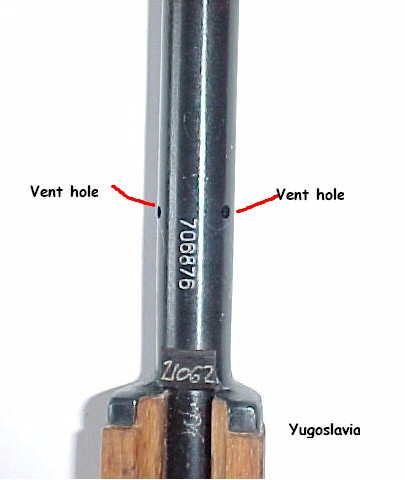
China and all others use 2 vent holes that are uncovered and directed towards the bottom of the rifle.
![]()
Gas Cylinder Piston
All of the Gas Cylinder pistons are constructed the same. The various pictures below show the gas cylinder piston from the SKS. The Piston takes the force of the gas from the spent cartridge and moves backward approx 3/4 of an inch. This in turn applies force to the Op Rod.. Currently these are the only differences I have noticed. Some are only cosmetic, some have different stampings, some are shaped slightly different and some are just plain different.

The Gas Piston on most all SKS rifles and paratroopers measures 9 1/2" long. The SKS 'S' paratrooper has a shorter rod @ 8 3/4"
![]()
Gas Operating Rod
All of the op rods are constructed the same. The Op Rod and Spring are located directly below the rear sight assembly. The various pictures below show the Op Rod and Spring from the SKS. The Op Rod, which is under spring pressure to remain forward, is pushed backwards against the bolt carrier causing it to open and eject the spent cartridge. Currently these are the only differences I have noticed. Some are only cosmetic, some have different stampings, some are shaped slightly different and some are just plain different.
Op rod spring and rod. The Op Rod measures 3 1/8" long. Note how the 3 3/4" long spring is wound from stands of wire.
![]()
Bolt Carrier & Recoil Spring
The Op rod pushes back on the bolt carrier forcing the recoil spring to compress and then the shell gets ejected and the recoil spring forces the bolt carrier closed while loading the next round into the chamber. The spring fits into the bolt carrier with the floppy end going into the bolt carrier and the solid end against the rear, see below.
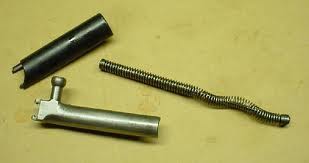
Receiver cover in black, bolt carrier and recoil spring.
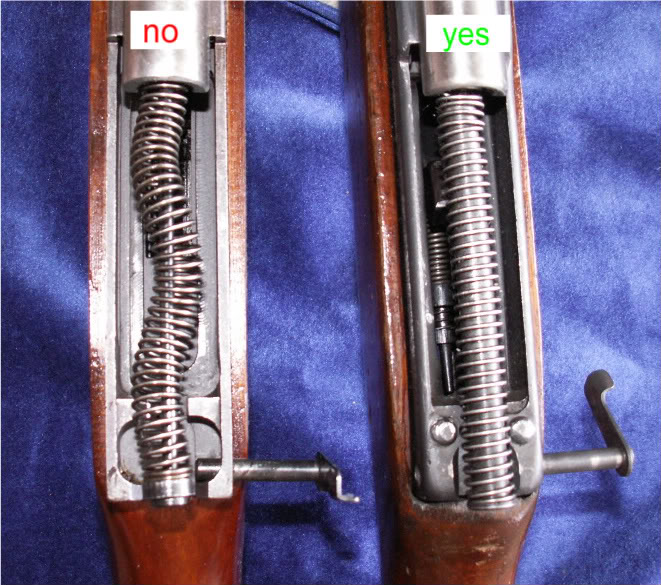
This is a good picture from sksboards.com showing the right and wrong way to install the recoil spring. Note the right one appears to be a sheet metal receiver.
![]()
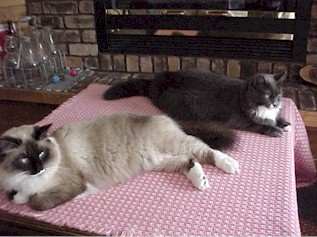 Simon and
Sophia
Simon and
Sophia
![]()
SKS MAIN MENU
 Click
on mailbox to email me
Click
on mailbox to email me

This page is still under construction
YooperJ
Started in
1999 by [Yooper John's]. All rights reserved.
Revised:
04 Mar 2016 12:54:28 -0600
.